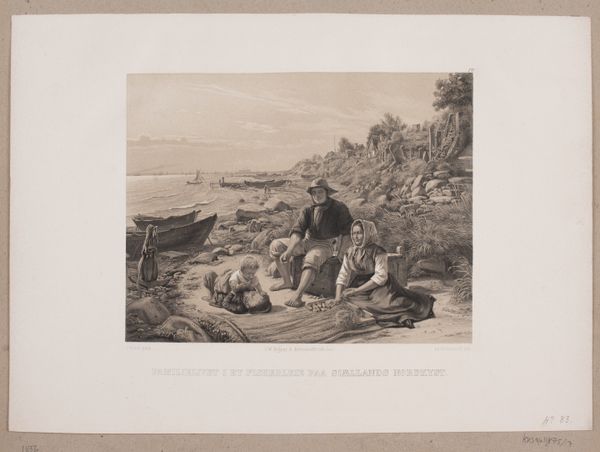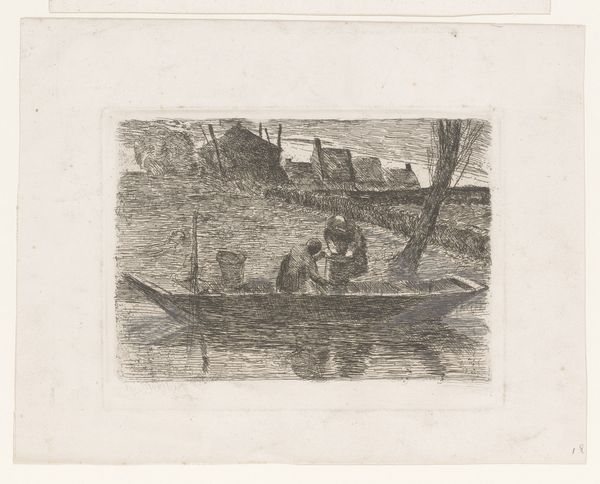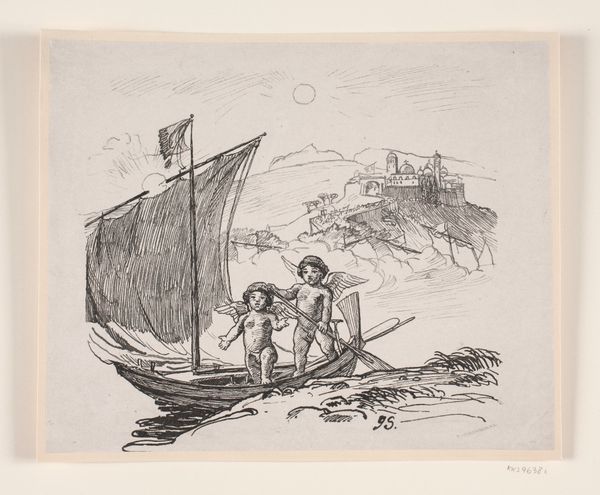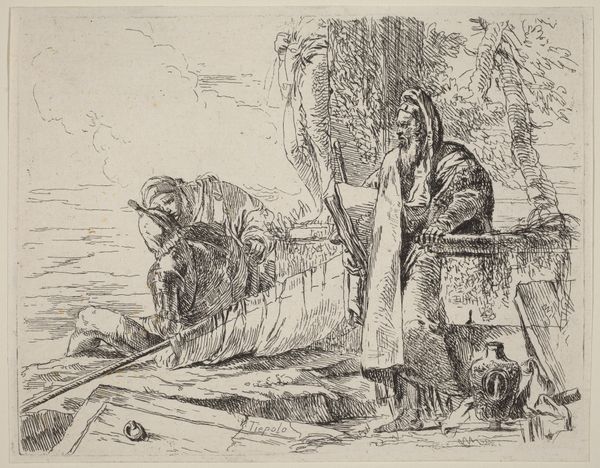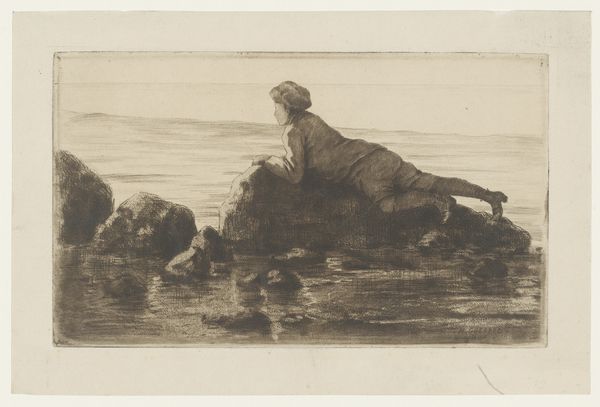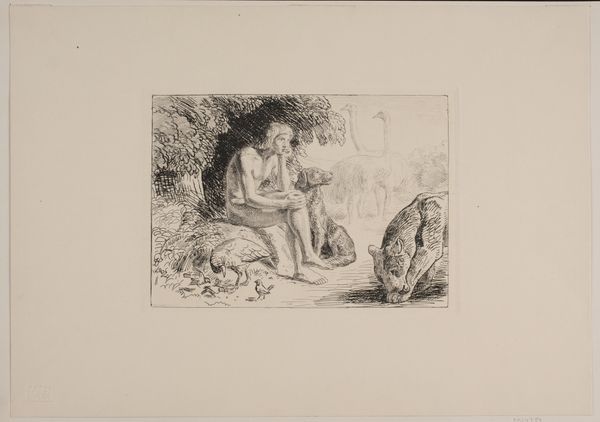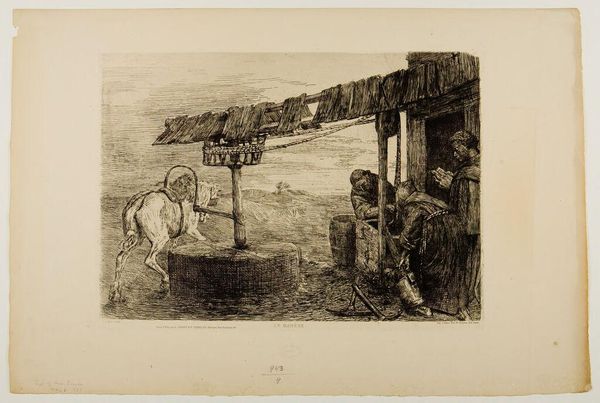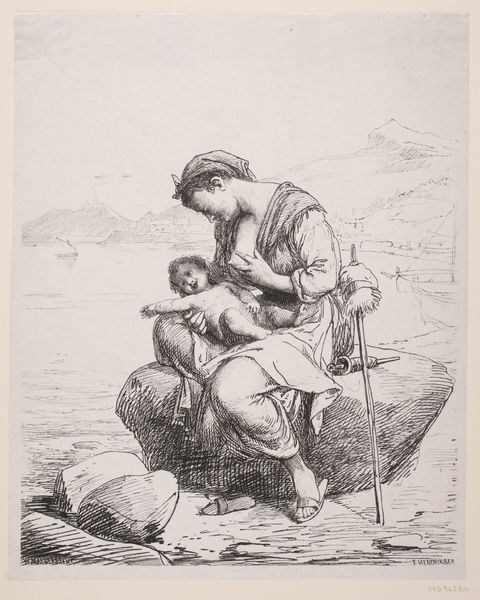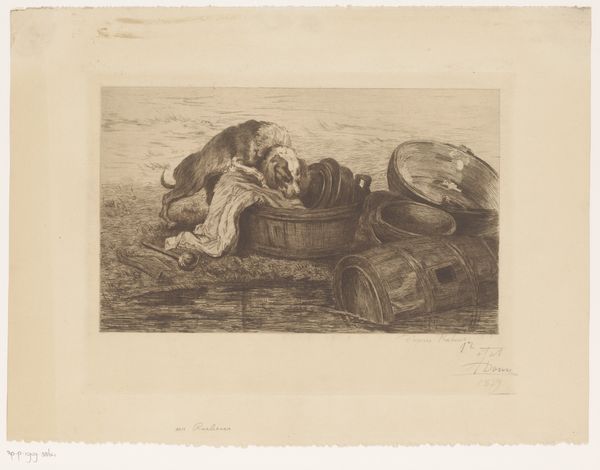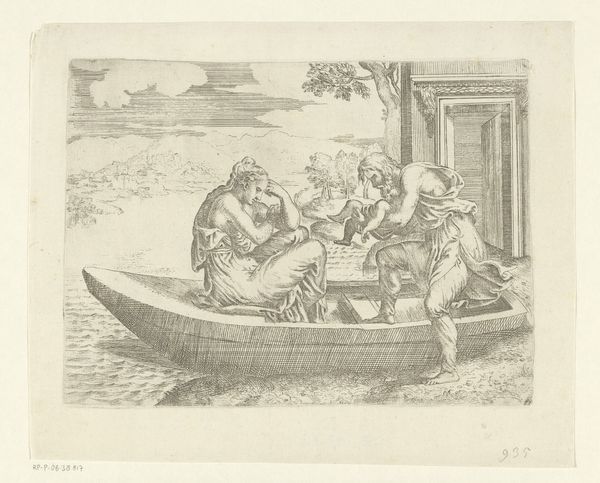
Illustration til Chr. Winther, "Billedbog for Store og Smaa" 1847 - 1871
drawing, print, paper, ink, pencil
pencil drawn
drawing
pencil sketch
landscape
paper
ink
pencil drawing
pencil
genre-painting
Dimensions: 96 mm (height) x 121 mm (width) (billedmaal)
Curator: Welcome to this exploration of F. Hendriksen’s “Illustration til Chr. Winther, ‘Billedbog for Store og Smaa,’” created sometime between 1847 and 1871. The medium here is ink and pencil on paper. Editor: It strikes me as a very intimate scene, almost melancholic, even though it depicts children at play. The monochromatic palette lends a timeless quality, don’t you think? Curator: Precisely. I am interested in the choice of ink and pencil for a children’s book illustration. Consider the material constraints and accessibility for reproduction at that time. The drawing needed to be easily translated into a print form that was then widely available. What does that say about childhood education and material culture in the mid-19th century? Editor: That speaks to class, surely. What opportunities were available to children, who had access, and who was absent? This feels like an upper middle class domesticity being depicted. Curator: Yes, the imagery definitely reinforces a specific class dynamic, but also broader societal values regarding childhood innocence and leisure. Note how the meticulous detail in the children’s clothing contrasts with the sketchier background of the shoreline. What does this level of attention to craft convey about labour, production and consumption in this historical moment? Editor: Looking closely, I find myself thinking about how representations like this normalize specific gender roles and activities. The three girls are confined to this liminal space by the water's edge. Meanwhile, a solitary ship departs—implicitly representing the domain of men and adventure. It reminds us how artwork, even for children, embeds cultural expectations and inequalities. Curator: Absolutely. Consider the historical context of gendered divisions of labor during the 19th century. Domestic skills like sewing and tending to the home would be central to how those little girls saw their futures unfolding. Even how the printed page made its way into their hands— bound, and retailed—that involved different kinds of labor that all converge in this small drawing. Editor: These illustrations shape children's world views. What ideological frameworks are silently at play in this seemingly innocuous landscape? How did illustrations, such as this one, influence the future trajectory of these children’s social lives? Curator: Indeed. The layered narratives intertwined within a humble illustration prompts so many fascinating questions regarding gender, labor, class, and the very material culture surrounding education. Editor: This image certainly pushes us to reconsider the intersections of visual culture, labor and our understandings of childhood during this era.
Comments
No comments
Be the first to comment and join the conversation on the ultimate creative platform.
